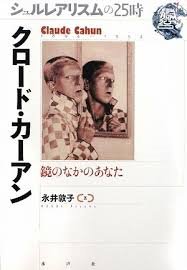Studies of Claude Cahun (photographer, writer)
Nagai Atsuko, Professor
Faculty of Humanities, Department of French Literature
- Research

【Abstract】
Claude Cahun (Nantes, France, 1894 – Jersey, England, 1954), photographer and writer, came from a wealthy Jewish family of Nantes, and had a female artist as her lifelong partner. Cahun’s body of work was an attempt to be liberated from the moral and material restrictions imposed by her family, her education, and the social mores of her time. From an analysis of her photographs (self-portraits and collages) and writings (short stories and essays) a variety of perspectives emerge with relevance for today’s gender and feminism studies.
To understand the impact of her efforts to express her self-understanding and be freed from the pressures of gender norms through an ambiguous femininity, I explore the historical and philosophical significance of her art in the context of the views of sociologists and sexologists of her time, as well as the views (some hostile, some sympathetic) of her contemporary surrealist artists.
【Future prospects】
Gender is not only a private but also a public issue. It is in this context, the public aspect of her work, that I analyze English cultural and social representations which appear frequently in the photographs and writings of Cahun. For example, in a series of self-portraits she mocks the appropriation of sport by the English state for nationalistic and militaristic reasons by replacing the masculine image with an image of her exaggerated femininity. Another example of Cahun’s engagement on a public level is when she wrote about the absurdity of the criminalization (1918) of the London performance of Oscar Wild’s Salomé. Thus to fully understand the public aspect of Cahun’s work, as well as the private, we have to understand the social and cultural meanings of these English issues, and how she used them to be liberated from gender’s pressures.
-Atsuko Nagaï, Claude Cahun (published in Japanese), Tokyo, Suiseisha, 2010, 275p.
-Atsuko Nagaï, «Claude Cahun’s self portraits -small photographs-» (published in Japanese), Masanori Tsukamoto, Shashin to bungaku, Tokyo, Heibonsha, 2013, p.177-192.
-Atsuko Nagaï, «Claude Cahun and England» (published in Japanese), Chika Amano, Kindai no soukoku, 3. Paris II, Chikurinsha, 2015, p.327-345.

